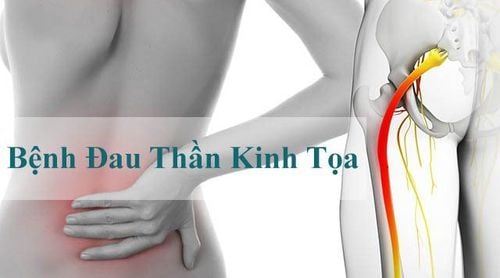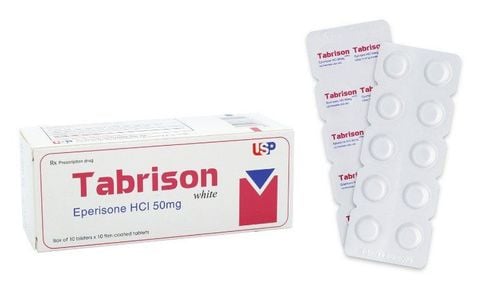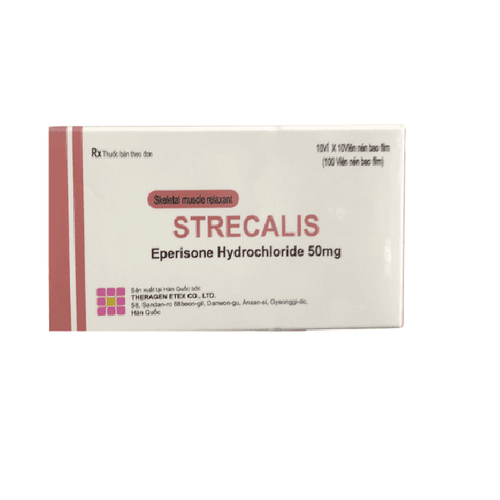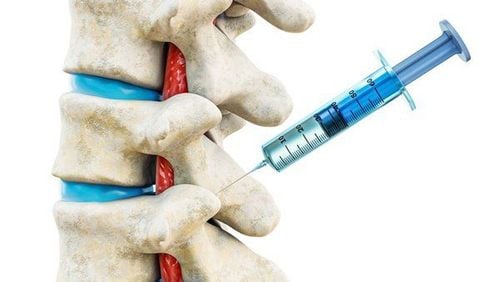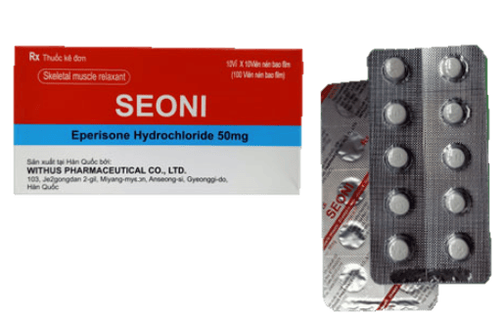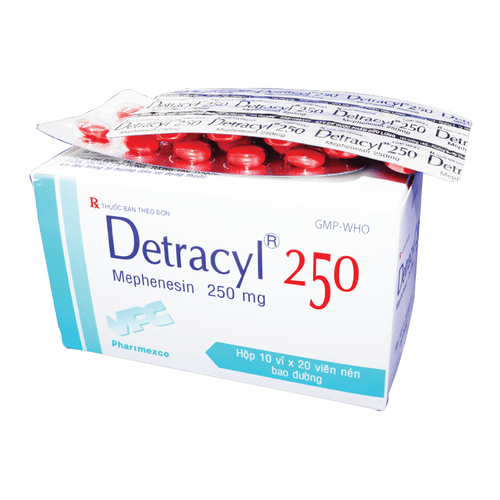This is an automatically translated article.
The article was written by Dr. BS Tran Hoang Ngoc Anh - Head of Neurosurgery Department, Department of General Surgery - Vinmec Central Park International General Hospital.
The typical presentation of cervical disc herniation is the presenting symptom that wakes the patient up in the morning, without the presence of trauma or stress.
1. Clinical Manifestations
The following issues will explain the signs of cervical disc herniation:
In the neck region, nerve roots emerge above the arch of the eponymous vertebra (as opposed to in the lumbar spine). The nerve root emerges through the nerve opening located just below the surface of the arch. The intervertebral space is located in the posterior part of the arch.
2. Cervical radiculopathy (cervical radiculopathy)
Due to the problems mentioned above, cervical disc herniation will press on the nerve root that emerges through the nerve hole at the same level of the herniation (cervical disc herniation C6-7 will cause radiculopathy). C7). The characteristic signs of cervical radiculopathy are described in Table 14.

Left C6 radiculopathy (due to C5-6 cervical disc herniation) sometimes presents with myocardial infarction pain. C8 and T1 nerve roots can cause partial Horner syndrome.
3. Differential diagnosis
Cervical spondylosis (including trochanteric) Cervical spine sprains Cervical spine fracture due to trauma or disease Occipital-cervical neuralgia Occipital-neck joint abnormalities Neuromuscular pain Eagle's syndrome
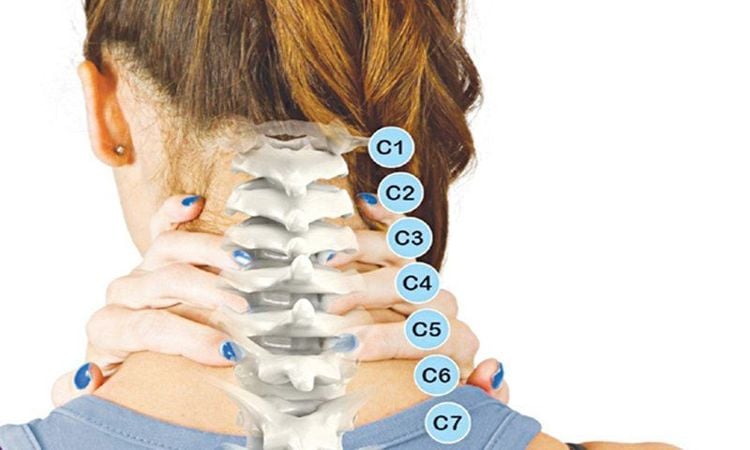
4. Signs to help detect cervical radiculopathy
Most cervical herniated discs limit neck mobility. The neck tilt causes pain that increases if there is cervical disc disease (in some cases, neck flexion causes pain). Some patients relieve pain by elevating the forearm and cupping the back or tilting the head to the painful side (associated with the shoulder flexion sign). Lhermitle sign (+) (electric shock-like sensation down the spine).
Other signs
The symptoms below when detected are specific but not sensitive for signs of cervical nerve root compression.
Spurling's sign: radicular pain occurs when the examiner puts pressure on the attachment area while the head is tilted to the affected side (sometimes ask the patient to tilt the neck). By narrowing the foramen and causing the disc to bulge further. Similar to Lasègue sign in lumbar disc herniation. Stretching the cervical spine: axial traction with a weight of 10-15kg when the patient has symptoms of radiculopathy in the supine position (traction through the mandible and occipital). Nerve root symptoms decrease or disappear. Shoulder test: the patient sits, tilts the head to the healthy side and lowers the painful shoulder, the nerve root symptoms decrease or disappear.
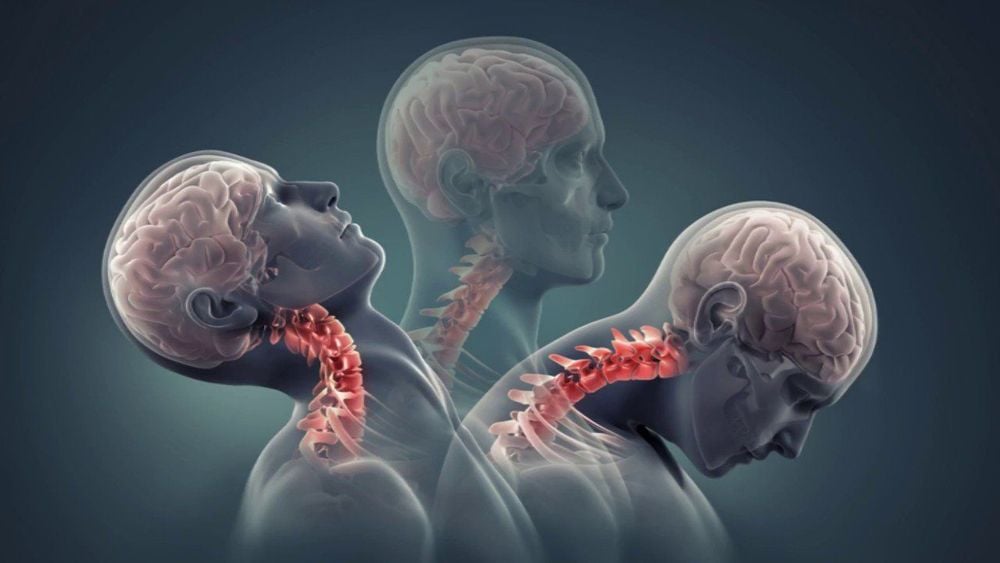
5. Diagnostic tests
The order of performing diagnostic imaging tests is: MRI, Myelography-CT, CT.
MRI Is the test of first choice for diagnosis. The accuracy is lower than Myelography-CT (about 85-90% because the neural foramen image is only quite clear to clear), but is a non-invasive test. With myelopathy, MRI has a diagnostic value of more than 95%.
CT AND Myelography-CT Indications: When MRI cannot be performed, when MRI images are not sufficient for diagnosis, or when detailed skeletal views are required. CT: clearly seen at the C5-6 floor, less clearly at the C6-7 floor (due to interference by the patient's shoulder and depending on the patient's condition) and not clear at the C7-T1 floor. Myelography-CT (contrast in water): is an invasive test, the patient needs to be hospitalized. Accurate diagnosis of cervical disc disease is 98%. Vinmec International General Hospital is one of the hospitals that not only ensures professional quality with a team of leading medical professionals, a system of modern equipment and technology. The hospital provides comprehensive and professional medical examination, consultation and treatment services, with a civilized, polite, safe and sterile medical examination and treatment space. Customers when choosing to perform tests here can be completely assured of the accuracy of test results.
Please dial HOTLINE for more information or register for an appointment HERE. Download MyVinmec app to make appointments faster and to manage your bookings easily.





